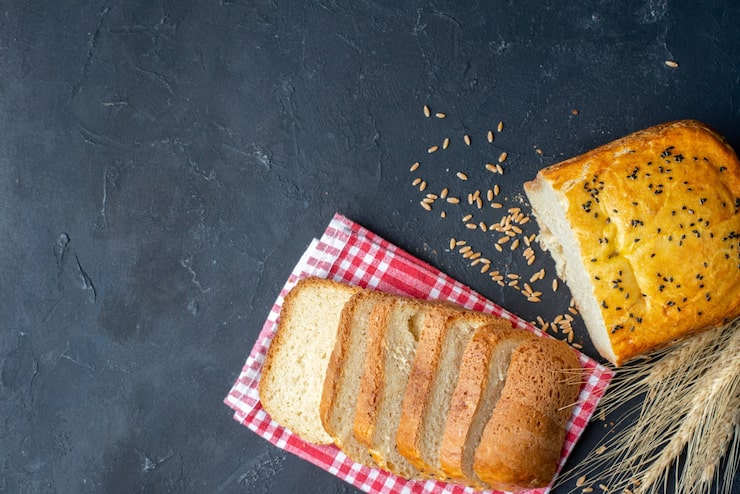Garlic bread is one of those treats I can’t resist when eating out. It’s crispy, full of flavour, and, frankly, delicious. But how healthy is it? Garlic itself has benefits, but the bread and butter are another story.
I looked at ingredients and nutrition info from popular supermarket brands and restaurants to find out. The result: tasty, but not very healthy. Garlic has some good properties, but most garlic bread is high in calories, fat, and salt because of the bread, butter, and oils. It’s best enjoyed occasionally and in moderation.

The ingredient list often tells the full story. Basic garlic bread is just flour, garlic, a bit of parsley, and salt. Yet many supermarket versions use palm oil or margarine instead of real butter—cheaper, but higher in saturated fat. Higher-quality brands, like M&S, use real butter and usually have shorter, simpler ingredient lists.
Homemade garlic bread, made with real butter or olive oil, is often healthier and tastier.
A single slice might seem small, but it adds up. Supermarket slices generally have about 81–120 calories each, depending on brand and size. Baguettes are a different matter: larger servings mean more calories and fat. For example, Sainsbury’s Garlic Baguette has 317 calories for half a baguette (80 g). The NHS recommends an average adult consumes no more than 70 g of fat and 6 g of salt per day, so larger portions of garlic baguette can take up a big chunk of those limits. Portion control is key—what starts as a side can easily become a big part of your daily calorie and fat intake.
Restaurant garlic bread often comes in portions over 100 g and can have three to four times the calories of a typical supermarket slice. Extra butter or oil and larger sizes make restaurant options much higher in fat and calories, so consider sharing or choosing lighter dishes if you’re eating out.
There are also digestive issues some people should watch for. Garlic and fat can relax the lower esophageal sphincter, which may cause heartburn or acid reflux in sensitive people. Garlic can be tough on some stomachs, especially in large amounts, and high-fat foods slow digestion, which can lead to indigestion or a heavy feeling. Garlic contains fructans, a carbohydrate that can trigger symptoms in people with IBS, and the high fat can worsen diarrhea or stomach pain. Overeating garlic bread may cause bloating, gas, or nausea for some.
So, is garlic bread healthy? Not really—at least not as a regular part of your diet. Garlic itself has health perks, but the amount in garlic bread is too small to make a real difference. The white bread, butter, or margarine add calories, saturated fat, and salt, which outweigh any minor benefits from the garlic.
But you don’t have to give it up. Make smarter choices: use whole-grain bread for fiber, swap butter or margarine for olive oil, add plenty of fresh garlic, and toss in herbs like parsley or oregano. Enjoy garlic bread occasionally, keep portions small, and pair it with nutrient-rich foods to keep things balanced.